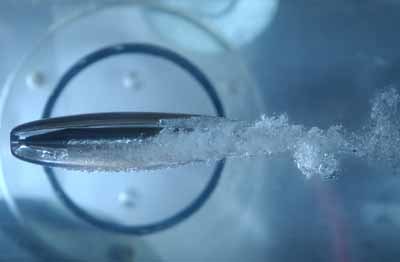Hydrophobic Submarine

Few days ago I had posted a question related to Hydrophobic objects on brilliant
I was wondering if Hydrophobic surfaces coupled with even lower level of Supercavitation can have amazing effect on achieving speed for under water travelling.
Look at this 4 minute video about Supercavitation research.
and this "supposed" technology from China
and finally here is the already built stealth version of supercavitation based vehicle
So what do you think about having hydrophobic material to counter massive corrosion that results during supercavitation?
BTW how do you think China might be thinking of achieving Mac2+ speed under water. Apparently creating gas bubble through gases seems impractical. Russians were able to build it at only Missile level.
Easy Math Editor
This discussion board is a place to discuss our Daily Challenges and the math and science related to those challenges. Explanations are more than just a solution — they should explain the steps and thinking strategies that you used to obtain the solution. Comments should further the discussion of math and science.
When posting on Brilliant:
*italics*or_italics_**bold**or__bold__paragraph 1
paragraph 2
[example link](https://brilliant.org)> This is a quote# I indented these lines # 4 spaces, and now they show # up as a code block. print "hello world"\(...\)or\[...\]to ensure proper formatting.2 \times 32^{34}a_{i-1}\frac{2}{3}\sqrt{2}\sum_{i=1}^3\sin \theta\boxed{123}Comments
The hydrophobic object goes faster since it is constantly pushing through the water
What is the effect on total energy of a particle executing SHM,if mass of particle is doubled.